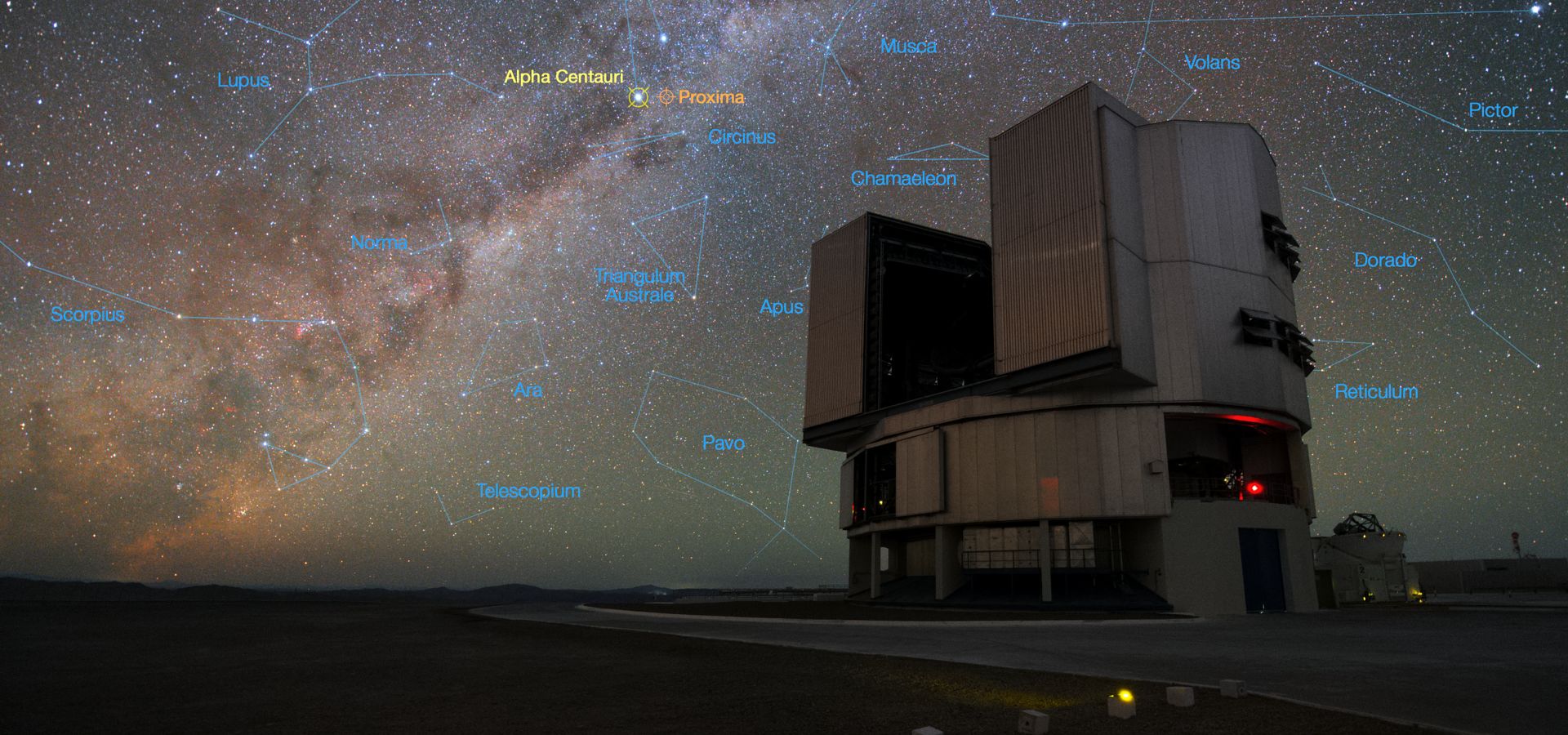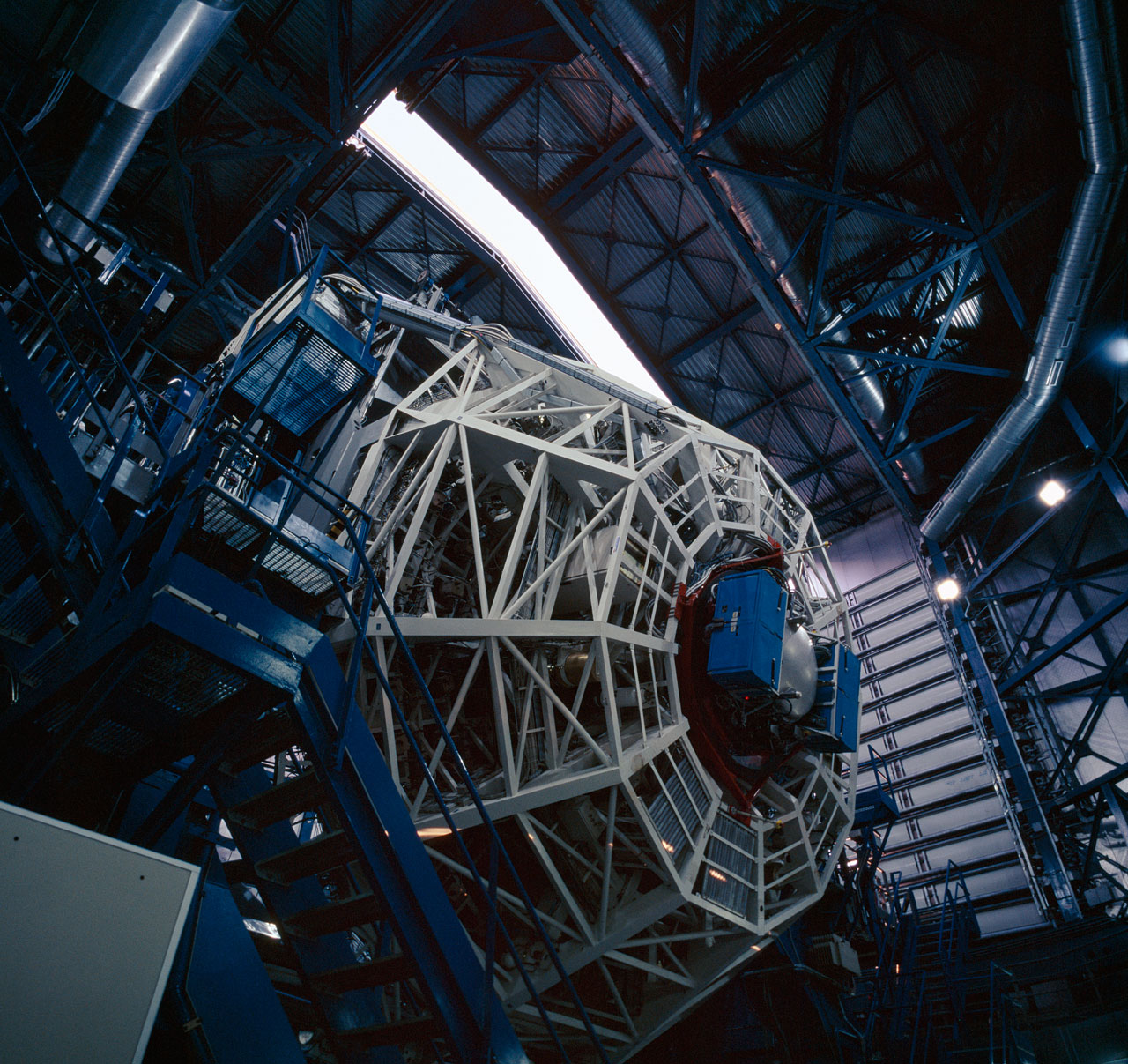- What the Breakthrough Initiatives are
- How ESO is upgrading the VLT to search for habitable planets in the Alpha Centauri system
- The challenges of searching for exoplanets
Q: Markus, how did you come to be involved in the Breakthrough Initiatives?
A: The Breakthrough Initiatives are a suite of scientific and technological programmes dedicated to probing the questions of life in the Universe. In 2015, back before ESO was officially involved, I was invited to join the committee of one of these programmes: Breakthrough Watch (BTW). The objective of BTW is to look for ways to find habitable exoplanets within a five parsec (16 light-year) search radius from Earth.
To me, this is the most interesting science goal in modern astronomy, because these planets will be sufficiently nearby for the Breakthrough Starshot probes to get there on a reasonable timescale. Breakthrough Starshot is another branch of the initiatives, which aims to design and build ultra-fast, light-driven nano-spacecraft to send to the Alpha Centauri system. This is the closest star system to Earth at just four light-years away, consisting of the binary stars Alpha Centauri A and B, plus Proxima Centauri. But we need to find habitable planets in this system first!
Q: Why are the Breakthrough Initiatives happening now? Why is this the right moment?
A: Recent years have brought a wealth of exciting exoplanet discoveries, and we now know that the presence of rocky planets in the habitable zone of a star is the rule rather than an exception. For example, ESO instruments have very recently discovered potentially habitable planets orbiting some of our nearest neighbours like Proxima Centauri and Ross 128. With the emerging class of extremely large telescopes currently under construction, the detection of biosignatures in the atmospheres of nearby exoplanets — gases like oxygen or methane that might indicate past or present life — will be within reach during the next decade, so now is the perfect time to find these exciting planets.
Q: Tell us more about how Breakthrough Watch will achieve its goals.
A: A big problem in exoplanet discovery is that stars are incredibly bright in comparison to their planets, and so habitable planets are hard to detect. But at mid-infrared wavelengths, between 10 and 20 microns, habitable planets become much brighter and are easier to find — between 10 and 12.5 microns, the Earth is actually the brightest planet in the Solar System.
During the initial meetings of the BTW committee, we identified thermal imaging with 8-metre ground-based telescopes — such as ESO’s Very Large Telescope — as one of the best short-term opportunities to search for Earth-sized, rocky planets in the Alpha Centauri system. In 2016 ESO signed an agreement with Breakthrough Initiatives to follow through with this plan. Agreements for similar efforts with other large observatories (such as Gemini and Magellan) are being considered as well.
ESO’s goal with NEAR (New Earths in the Alpha cen Region) is to improve the contrast and sensitivity of the existing Very Large Telescope instrument VISIR (VLT Imager and Spectrometer for mid-Infrared) at ESO’s Paranal Observatory in Chile. The proximity of Alpha Centauri means that we could detect a habitable planet in just 100 hours of observing time on the VLT.
Q: What technology is being developed to make these observations?
A: There are three main areas of technological innovation in the NEAR project. Firstly, Adaptive Optics (AO) will be used to improve the point source sensitivity of VISIR. The AO will be implemented by ESO, building on the newly-available deformable secondary mirror at the VLT’s Unit Telescope 4 (UT4).
Secondly, a team led by the University of Liège (Belgium), Uppsala University (Sweden) and Caltech (USA) will develop a novel vortex coronagraph to provide a very high imaging contrast at small angular separations. This is necessary because even when we look at a star system in the mid-infrared, the star itself is still millions of times brighter than the planets we want to detect, so we need a dedicated technique to reduce the star’s light. A coronagraph can achieve this.
Finally, a module containing the wavefront sensor and a new internal chopping device for detector calibration will be built by our contractor Kampf Telescope Optics in Munich.
Q: What challenges do you expect to face?
A: Generally, moving an instrument to a different telescope (in this case, we are moving VISIR from UT3 to UT4) is never a small task, especially for the operations staff at the observatory. An additional challenge is that we have to make NEAR work at its best with a fixed deadline and with sparse resources. The performance goals are very demanding and require one part in a million contrast at less than one arcsecond separation — which is a challenge similar to detecting a firefly sitting on a lighthouse lamp from a few hundred kilometres away! This has not yet been demonstrated in the thermal infrared.
Q: How long will these first big developments take?
A: The testing of the hardware in Europe is taking place now, during the first half of 2018. It will be implemented in VISIR at Paranal by end of 2018. The Alpha Centauri observing campaign is scheduled for mid-2019 and will last for about two weeks to collect the required 100 hours of observation time, once the system is delivering the expected performance.
Q: What exactly is your role in the project?
A: The work on NEAR is carried out by a small and highly motivated core team at ESO, in collaboration with engineers and scientists from various institutions and countries who are part of the ESO community, as well as industrial partners. My personal role, besides making the link to the Breakthrough Initiatives as a representative, is quite diverse. I mostly work on the design and analysis of the instrumental modifications, but I also develop the concepts for optimum observing and exploitation of the campaign data.
Q: For you, what is the most exciting aspect of this endeavour?
A: Besides the fascinating science goals, it is exciting to see how the Breakthrough Initiatives are managing to create momentum in the research field. By backing ideas and projects with a higher risk level than public funding agencies are ready to support, the Initiatives have motivated scientists to push the envelope and leap forward in their research. The Breakthrough Listen branch, for example, searches the sky for radio and laser signals emitted by intelligent beings over a volume in space that is orders of magnitudes larger than what has previously been observed.
Q: What hopes do you have for the outcomes of the Breakthrough Initiatives?
A: I am quite optimistic that we’ll achieve our technical and sensitivity goals with NEAR. Of course, we do not know whether the planets we are looking for actually exist in the Alpha Centauri system. The fact that Alpha Centauri A and B are a relatively close binary may make it more difficult for planets to have formed and exist in the system. The chances are hard to quantify, but if we detected a habitable planet in the Alpha Centauri system it would have incredible impacts even beyond astronomical science — which makes it worth looking anyway.
And identifying such planets isn’t even the biggest challenge on the cards. Once we know what’s out there, Breakthrough Starshot will aim for in-situ exploration of these systems using microsatellites, which is a whole new technological ball game!
Numbers in this article
| 4 | Distance to the Alpha Centauri system in light-years |
| 16 | The search radius of the Breakthrough Watch initiative, in light-years |
| 100 | The estimated hours of observing time at the VLT needed to make a detection of a habitable planet in the Alpha Centauri system |
| 2016 | The year ESO signed an agreement with the Breakthrough Initiatives |
Links
Biography Markus Kasper
Markus Kasper studied physics at the Universities of Frankfurt am Main and Heidelberg. He worked on Adaptive Optics wavefront reconstruction and star formation during his PhD at the Max Planck Institute for Astronomy in the late 1990s. Since then, he has worked at ESO in Garching, Germany, as an engineer and scientist at the interface between AO instrumentation and astronomical science, specialising in high-contrast imaging and the observation of exoplanets.






